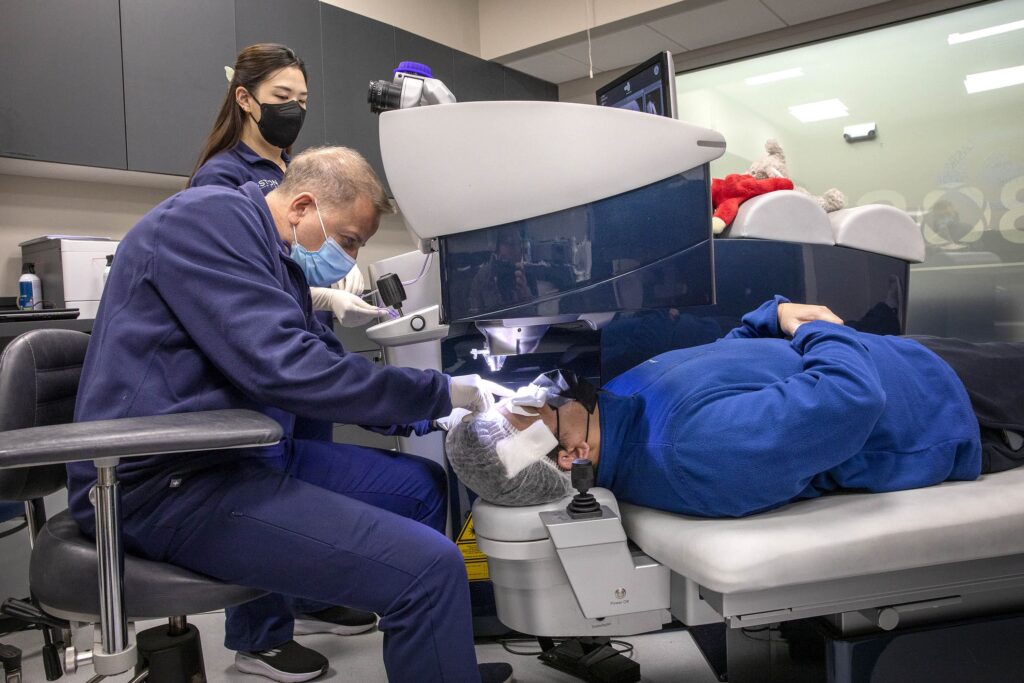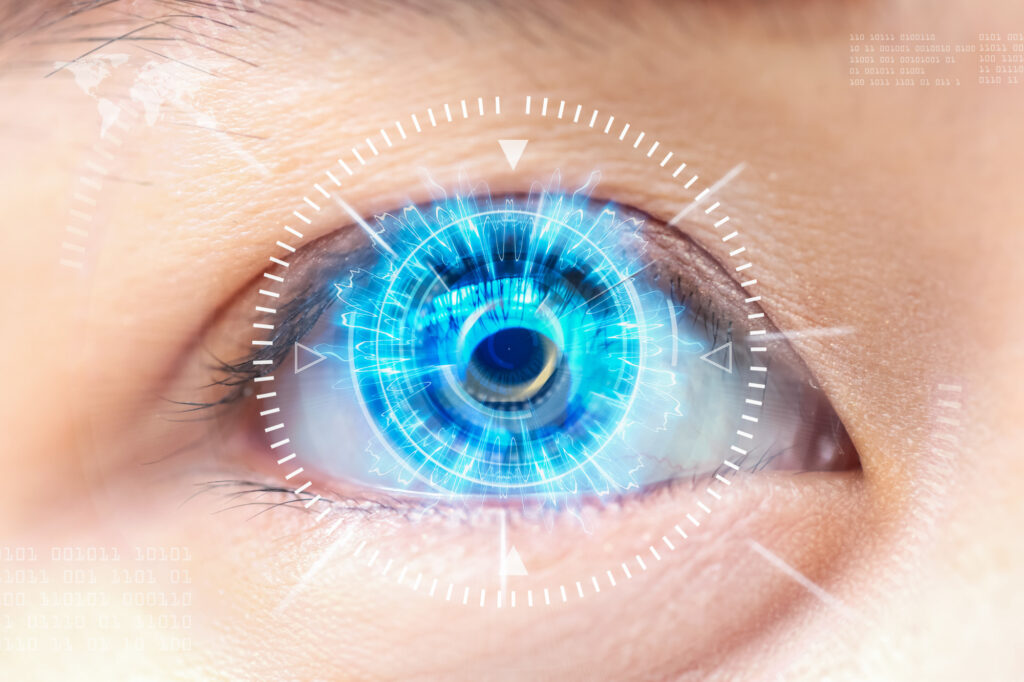The human eye is a remarkable organ that allows us to perceive the world around us. Our vision is crucial for navigating our daily lives, experiencing the beauty of nature, and connecting with others. However, vision can be compromised by various factors, including retinal disorders. The advancement of retinal treatments offers hope for improving and preserving vision. In this article, we will explore the anatomy of the eye, the role of the retina in vision, common retinal disorders, traditional retinal treatments, and the evolution towards advanced retinal treatments.
Understanding the Human Eye and Vision
The human eye is an intricate and complex organ, responsible for converting light into electrical signals that can be interpreted by the brain. It consists of several parts, each with a distinct function. To comprehend the potential impact of advanced retinal detachment treatments, we must first understand the basic anatomy of the eye.
Anatomy of the Eye: A Brief Overview
The eye can be divided into three layers: the outermost fibrous layer, the middle vascular layer, and the innermost neural layer. The fibrous layer comprises the sclera, a tough, protective outer shell, and the cornea, a transparent structure that helps to focus light onto the retina. Moving inward, we encounter the vascular layer, which consists of the choroid, ciliary body, and iris. Finally, the neural layer contains the retina, a thin tissue that lines the back of the eye and contains the light-sensitive cells responsible for vision.
Let’s delve deeper into each layer of the eye. The fibrous layer not only provides protection but also maintains the shape of the eye. The sclera, often referred to as the “white of the eye,” is a dense and fibrous tissue that covers most of the eyeball. It serves as a shield, shielding the delicate inner structures from harm. The cornea, on the other hand, is the clear, dome-shaped tissue that covers the front of the eye. It acts as a window, allowing light to enter the eye and bending it to focus on the retina.
The vascular layer, also known as the uvea, is responsible for supplying blood to the eye. It consists of the choroid, a highly vascularized tissue that nourishes the retina, and the ciliary body, which produces the aqueous humor that fills the front part of the eye. The iris, a colored circular structure, controls the amount of light entering the eye by adjusting the size of the pupil.

Now, let’s explore the neural layer, which is the most crucial layer for vision. The retina, as mentioned earlier, is a thin tissue that lines the back of the eye. It contains millions of specialized cells called photoreceptors, which detect and convert light into electrical signals. These signals are then transmitted through the optic nerve to the brain, where they are interpreted as visual images. Among the photoreceptors, two main types dominate: rods and cones.
The Role of the Retina in Vision
Rods, which are more numerous than cones, are responsible for peripheral and dim light vision. They are highly sensitive to light and allow us to see in low-light conditions. Cones, on the other hand, enable color vision and visual acuity. They are concentrated in the central part of the retina, known as the macula, which is responsible for sharp, detailed vision.
Within the retina, there are also other important cell types, such as bipolar cells, ganglion cells, and horizontal cells, which play crucial roles in transmitting and processing visual information. The complex interactions between these cells allow us to perceive the world around us in incredible detail.
Common Retinal Disorders and Their Impact on Vision
Unfortunately, various retinal disorders can impair vision and have a profound impact on individuals’ quality of life. Conditions such as age-related macular degeneration (AMD), diabetic retinopathy, and retinal detachment can cause vision loss and, in severe cases, blindness. These disorders often affect the function of the photoreceptor cells or the underlying structures that support retinal function.
Age-related macular degeneration (AMD) is a leading cause of vision loss in older adults. It affects the macula, the central part of the retina responsible for sharp, central vision. AMD can result in blurred or distorted vision, making it difficult to read, recognize faces, or perform daily activities.
Diabetic retinopathy, as the name suggests, is a complication of diabetes that affects the blood vessels in the retina. It can lead to vision loss if left untreated. Symptoms may include blurred vision, floaters, and difficulty seeing at night.
Retinal detachment occurs when the retina separates from the underlying tissue. This can cause sudden vision loss or the appearance of flashing lights or floaters. Immediate medical attention is necessary to prevent permanent vision loss.
Understanding the intricacies of the human eye and the potential impact of retinal disorders is crucial for developing effective treatments and interventions. Ongoing research and advancements in technology offer hope for improving vision outcomes and enhancing the quality of life for individuals affected by these conditions.
The Evolution of Retinal Treatments
Over the years, significant progress has been made in the field of retinal treatments. Traditional methods have aimed to slow the progression of retinal disorders and manage their symptoms. However, these approaches often have limitations and face challenges, prompting the need for more advanced and effective treatments.
Retinal disorders, such as age-related macular degeneration (AMD) and diabetic retinopathy, can have a profound impact on a person’s vision and quality of life. Traditional retinal treatments have typically involved the use of medications, laser therapies, or surgical interventions.

Traditional Methods of Retinal Treatment
Medications such as anti-VEGF agents have been a cornerstone of traditional retinal treatments. These drugs work by reducing abnormal blood vessel growth and leakage in conditions like AMD and diabetic retinopathy. By targeting the underlying cause of these disorders, these medications can help slow down the progression of vision loss and improve visual acuity.
Laser therapies, such as photocoagulation, have also been widely used in the treatment of retinal disorders. This technique involves using a laser to seal leaking blood vessels or destroy abnormal retinal tissue. By precisely targeting the affected areas, laser therapy can help prevent further damage to the retina and preserve vision.
Surgical interventions, such as vitrectomy, have been employed in cases of severe retinal disorders, including retinal detachment. This procedure involves the removal of the gel-like substance within the eye, known as the vitreous humor, to treat retinal detachment and other conditions. By removing the vitreous humor and replacing it with a clear solution, surgeons can alleviate tension on the retina and restore its normal position.
Limitations and Challenges of Existing Treatments
While traditional retinal treatments have been beneficial for many patients, they have certain limitations. Some medications may require frequent injections, which can be burdensome for individuals. The need for regular visits to receive these injections can also be time-consuming and costly.
Laser therapies, although effective in many cases, can sometimes cause damage to healthy tissue surrounding the targeted area. This collateral damage can lead to complications and potentially worsen vision in some patients. Additionally, laser therapy may not be suitable for certain retinal disorders that require a more precise and targeted approach.
Surgical interventions, while often successful in treating retinal disorders, carry inherent risks. These risks include infection, bleeding, and complications related to anesthesia. Recovery periods after surgery can also be lengthy, requiring patients to limit their activities and take time off from work or other responsibilities.
The Shift Towards Advanced Retinal Treatments
In recent years, there has been a significant shift towards the development of advanced retinal treatments that offer new hope for patients with retinal disorders. These innovative approaches aim to target the underlying causes of retinal damage, rather than simply managing symptoms.
Advanced retinal treatments utilize cutting-edge technologies, genetic therapies, and stem cell research to provide more targeted and personalized solutions. Gene therapy, for example, involves introducing healthy genes into the retina to replace defective ones. This approach holds great promise for inherited retinal disorders, where a single gene mutation can cause significant vision loss.
Stem cell research is another area of great interest in the field of retinal treatments. Scientists are exploring the potential of using stem cells to regenerate damaged retinal tissue and restore vision. By harnessing the regenerative capabilities of stem cells, researchers hope to develop therapies that can reverse the effects of retinal disorders and improve visual function.
Overall, the evolution of retinal treatments has brought about significant advancements in the field. From traditional methods to advanced therapies, the focus has shifted from managing symptoms to targeting the root causes of retinal disorders. With ongoing research and technological advancements, the future holds great promise for further improving the outcomes of retinal treatments and enhancing the lives of individuals affected by these conditions.

The Advent of Advanced Retinal Treatments
The science behind advanced retinal treatments is highly promising, offering potential breakthroughs in restoring and preserving vision. Researchers have made significant strides in understanding the genetic and cellular mechanisms that contribute to retinal disorders. This knowledge has paved the way for the development of innovative therapies and interventions.
Different Types of Advanced Retinal Treatments
Advanced retinal treatments encompass a range of approaches that target specific aspects of retinal disorders. One such approach involves the use of gene therapy to correct genetic mutations that contribute to retinal diseases. By delivering functional genes to the retina, researchers hope to restore normal cellular function and halt disease progression.
Another promising avenue is the utilization of stem cells to regenerate damaged retinal tissue. Stem cells have the remarkable ability to develop into different cell types, including photoreceptors. By transplanting stem cells into the retina, scientists aim to replace damaged or lost cells and restore visual function.
The Potential of Gene Therapy and Stem Cell Treatment
Combining gene therapy with stem cell treatment holds great promise. This approach seeks to address both genetic defects and the cellular damage associated with retinal disorders. By repairing genetic mutations and regenerating damaged tissue, researchers hope to achieve long-lasting improvements in vision.
The Future of Vision with Advanced Retinal Treatments
The development and implementation of advanced retinal treatments offer an optimistic future for individuals with retinal disorders. These treatments hold the potential to revolutionize the field of ophthalmology and transform the lives of millions.
Predicted Improvements in Vision Quality
With advanced retinal treatments, researchers anticipate significant improvements in vision quality. Patients who have experienced vision loss due to retinal disorders may regain visual acuity, enhanced color perception, and improved contrast sensitivity. These improvements can have a profound impact on an individual’s independence, mobility, and overall quality of life.
Potential for Treating Previously Untreatable Conditions
Advanced retinal treatments may also offer hope for individuals with previously untreatable or untreatable conditions. Disorders that were once deemed irreversible may now have potential treatment options through gene therapy and stem cell interventions. This offers new possibilities for individuals who have experienced limited treatment options or no viable solutions for their condition.
The Role of Advanced Retinal Treatments in Preventive Eye Care
Beyond treating existing retinal disorders, advanced retinal treatments also hold promise in preventive eye care. By identifying individuals at risk of developing retinal disorders and intervening early with advanced treatments, it may be possible to prevent or delay the onset of vision loss. Early detection and intervention can be instrumental in preserving vision and maintaining overall eye health.
In conclusion, the future of vision looks bright with the advent of advanced retinal treatments. These innovative approaches offer hope for restoring and preserving vision in individuals with retinal disorders. As research progresses and technology advances, it is crucial to continue supporting and investing in the development of these therapies. By doing so, we can unlock the full potential of advanced retinal treatments and provide a brighter future for those living with retinal disorders.
More to read: A Comprehensive Guide to Effective Retinal Treatments

